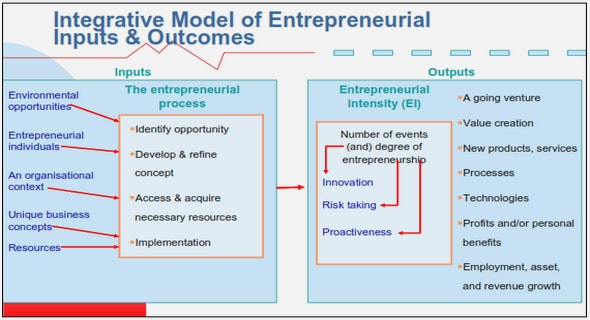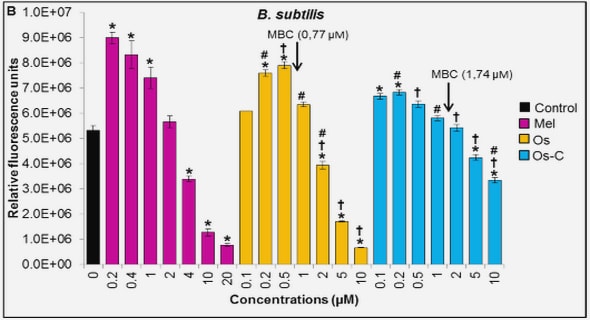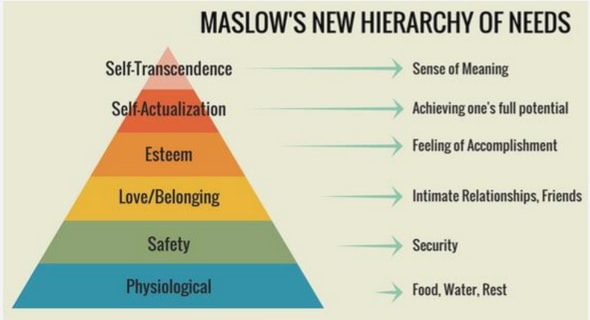Get Complete Project Material File(s) Now! »
The Moment of Truth
The time has come. The moment of truth has arrived. South Africa has been plunged into a crisis that is shaking the foundations and there is every indication that the crisis has only just begun and that it will deepen and become even more threatening in the months to come. It is the KAIROS or moment of truth not only for apartheid but also for the Church. We as a group of theologians have been trying to understand the theological significance of this moment in our history. It is serious, very serious. For very many Christians in South Africa this is the KAIROS, the moment of grace and opportunity, the favorable time in which God issues a challenge to decisive action. It is a dangerous time because, if this opportunity is missed, and allowed to pass by, the loss for the Church, for the Gospel and for all the people of South Africa will be immeasurable. Jesus wept over Jerusalem.aim loyalty to the same Church.
They are both baptized in the same baptism and participate together in the breaking of the same bread, the same body and blood of Christ. There we sit in the same Church while outside Christian policemen and soldiers are beating up and killing Christian children or torturing Christian prisoners to death while yet other Christians stand by and weakly plead for peace. The Church is divided and its Day of Judgment has come The moment of truth has compelled us to analyze more carefully the different theologies in our Churches and to speak out more clearly and boldly about the real significance of these theologies. We have been able to isolate three theologies and we have chosen to call them ‘State Theology,’ ‘Church Theology’ and ‘Prophetic Theology.’ In our thoroughgoing criticism of the first and second theologies we do not wish to mince our words. The situation is too critical for that.
Critique of State Theology
The South African apartheid State has a theology of its own and we have chosen to call it ‘State Theology.’ ‘State Theology’ is simply the theological justification of the status quo with its racism, capitalism and totalitarianism. It blesses injustice, canonizes the will of the powerful and reduces the poor to passivity, obedience and apathy. How does ‘State Theology’ do this? It does it by misusing theological concepts and biblical texts for its own political purposes. In this document we would like to draw your attention to four key examples of how this is done in South Africa. The first would be the use of Romans 13:1-7 to give an absolute and ‘divine’ authority to the State. The second would be the use of the idea of ‘Law and Order’ to determine and control what the people may be permitted to regard as just and unjust.
Law and Order
The State makes use of the concept of law and order to maintain the status quo which it depicts as ‘normal.’ But this law is the unjust and discriminatory laws of apartheid and this order is the organized and institutionalized disorder of oppression. Anyone who wishes to change this law and this order is made to feel that they are lawless and disorderly. In other words they are made to feel guilty of sin. It is indeed the duty of the State to maintain law and order, but it has not divine mandate to maintain any kind of law and order. Something does not become moral and just simply because the State has declared it to be a law and the organization of a society is not a just and right order simply because it has been instituted by the State. We cannot accept any kind of law and any kind of order.
The concern of Christians is that we should have in our country a just law and a right order. The Threat of Communism We all know how the South African State makes use of the label ‘communist.’ Anything that threatens the status quo is labeled ‘communist.’ Anyone who opposes the State and especially anyone who rejects its theology is simply dismissed as a ‘communist.’ No account is taken of what communism really means. No thought is given to Why some people have indeed opted for communism or for some form of socialism. Even people who have not rejected capitalism are called ‘communists’ when they reject ‘State Theology.’ The State uses the label ‘communist’ in an uncritical and unexamined way as its symbol of evil.
‘State Theology’ like every other theology needs to have its own concrete symbol of evil. It must be able to symbolize what it regards as godless behavior and what ideas must be regarded as atheistic. It must have its own version of hell. And so it has invented, or rather taken over, the myth of communism. All evil is communistic and all communist or socialist ideas are atheistic and godless. Threats about hell-fire and eternal damnation are replaced by threats and warnings about the horrors of a tyrannical, totalitarian, atheistic and terrorist communist regime–a kind of hell-on-earth. This is a very convenient way of frightening some people into accepting any kind of domination and exploitation by a capitalist minority.
Table of Contents :
- The Kairos Document – A Challenge to the Church
- Chapter One: Introduction
- 1.1 Relevance
- 1.2 The aim
- 1.3 Rationale
- 1.4 The research question
- 1.5 Hypothesis
- 1.6 Research methodology
- 1.7 Quantitative research (literary)
- 1.8 Qualitative research (empirical)
- 1.9 Researcher as participant-observer
- 1.10 Terminology
- 1.11 Study outline
- 1.11.1 Chapter One: Introduction
- 1.11.2 Chapter Two: Church-State relations under the spotlight again
- 1.11.3 Chapter Three: The Kairos Document: Yesterday and Today
- 1.11.4 Chapter Four: The Kairos Document: A theological analysis
- 1.11.5 Chapter Five: From the old to a new Kairos?
- 1.11.6 Chapter Six: Conclusion
- Chapter Two: Church-State relations under the spotlight again
- 2.1 Introduction
- 2.2 Church–State relations in the 1950s and 1960s
- 2.2.1 The role of the Dutch Reformed Church (DRC)
- 2.2.2 The role of the English-speaking churches
- 2.3 A series of initiatives
- 2.3.1 Wilgespruit Fellowship Centre (1948)
- 2.3.2 The Cottesloe Consultation (1960)
- 2.3.3 The Christian Institute (1963)
- 2.3.4 Message to the people of South Africa (1968)
- 2.3.5 The Institute for Contextual Theology (1981)
- 2.3.6 The Belhar Confession (1982)
- 2.3.7 The Road to Damascus (1989)
- 2.3.8 The Rustenburg Declaration (1990)
- 2.4 Faith-Based Organisations and the establishment of the Truth and
- Reconciliation Commission
- 2.5 Church and state relations with reference to power
- 2.5.1 The Church’s position
- 2.5.2 The State’s position
- 2.5.3 The Church falters as it aligns itself with the State
- Chapter Three: The Kairos Document – Yesterday and Today
- 3.1 Introduction
- 3.2 The context of the KD publication
- 3.2.1 Soweto students’ uprising (1976)
- 3.2.2 Mounting pressure during the 1980s
- 3.2.2.1 A brief report of the SACC concerning the situation
- 3.2.2.2 The effect of the state of emergency and rent boycotts
- 3.2.2.3 The rise of trade unions and impact of industrial action
- 3.2.2.4 Internecine fighting: Another contributor to the Kairos moment
- 3.2.2.5 SACC’s call for a day of prayer for the end of unjust rule
- 3.2.2.6 Khotso House bombing (1988)
- 3.3 The publication of the Kairos Document (1985)
- 3.3.1 Rightwing attack on the KD
- 3.3.1.1 Signposts
- 3.3.1.2 Gospel Defence League (GDL)
- 3.3.1.3 Letter from the Confessing Fellowship of Germany
- 3.3.1.4 Further condemnation of the KD
- 3.3.1.5 Scepticism over the KD manifested by some church leaders
- 3.3.2 Bias of the critics of the KD
- 3.3.3 Impact of the Kairos Document
- 3.3.4 Some media coverage of the reaction to the publication of the KD
- 3.3.5 Current comments on the KD by some Christian activists
- 3.4 The KD’s position on reconciliation
- Chapter Four: The Kairos Document – A theological analysis
- 4.1 A general view of the Kairos Document in brief
- 4.1.1 Introduction
- 4.1.2 Core theological content of the Kairos Document
- 4.1.3 A critique of State Theology
- 4.1.3.1 Apartheid and the misuse of theological concepts
- 4.1.3.2 The state’s abuse of the law and order concept
- 4.1.3 3 The use of communism as a scape-goat for “Total Strategy”
- 4.1.3.4 Critique of State Theology is not time-bound
- 4.1.4 A critique of Church Theology – Influences that shaped the Church’s
- ambivalent stance towards apartheid and justice
- 4.1.4.1 The Church’s compromise on issues of justice devalued true
- peace and reconciliation
- 4.1.4.2 The Church’s ambiguity on apartheid militated against its calling
- 4.1.4.3 The Church’s inclination towards the status quo delayed change
- 4.1.4.4 The Church and political engagement
- 4.1.4.5 Debilitating effects of the divisions within the Church
- 4.1.4.6 Doctrinal differences, traditions and practices distort the Church’s message to the world
- 4.1.4.7 The Church’s colonial history, its use of violence
- and the influence of money militated against its fight for justice
- 4.1.4.8 The Church paradoxically incubates political leaders and societal transformers
- 4.1.4.9 The Church’s position concerning the poor and oppressed
- 4.1.4.10 The Church’s position on the sacredness of people’s liberation
- 4.1.5 A critique of Prophetic Theology in the KD
- 4.1.5.1 Introduction
- 4.1.5.2 The nature of Prophetic Theology in the KD
- 4.1.5.3 The significance of Prophetic Theology according to the KD
- 4.1.5.4 The KD as a people’s theology centred on the Bible
- 4.1.5.5 Prophetic Theology also targets the Church
- 4.1.5.6 Prophetic Theology also as manifestation of a holistic God
- 4.1.5.7 Some limitations of Prophetic Theology in the KD
- 4.1.5.7.1 Prophetic Theology in the KD was confined to the oppressor
- 4.1.5.7.2 The exclusion of women during the production and signing of the KD
- 4.1.5.8 Prophetic Theology manifested through individuals within the Church
- 4.1.5.9 The position of prophets against apartheid joining the democratic government
- 4.1.5.10 Prophetic Theology is discerned from social analysis
- 4.1.5.11 Prophetic Theology and tyranny
- 4.1.5.12 Liberation and hope in the KD
- Chapter Five: From the old to a new Kairos?
- 5.1 Introduction
- 5.2 A reminder: The rationale for the publication of the KD
- 5.3 The legacy of apartheid that created the old Kairos
- 5.4 The death of Apartheid
- 5.5 The building of democracy begins
- 5.6 The KD and the new government
- 5.7 South Africa today
- 5.7.1 The escalation of militant protests despite a new democratic government
- 5.7.1.1 The cancer of widespread corruption continues: Manifestations of the legacy of a colonial mentality
- 5.7.1.2 Sloth in service delivery
- 5.7.1.3 The humiliation of unemployment and destitution of job losses
- 5.7.1.4 Recession exacerbated by excessive and often misplaced government spending
- 5.7.1.5 Lack of appropriate skills: One of the residues of Bantu education and job reservation
- 5.7.1.6 Political patronage: A form of manipulation and oppression
- 5.7.1.7 Persistent racism
- 5.7.1.8 Inequalities
- 5.7.1.9 Different race groups operating from different perceptions about each other
- 5.7.1.10 Could active political disengagement be caused by “struggle fatigue” for some?
- 5.7.1.11 Globalisation and the negative effects of multinationals and market forces
- 5.8 The promotion of transformation in South Africa
- 5.8.1 Democracy creates space for the continuous struggle towards full humanity
- 5.8.2 Detoxification of the apartheid mentality: A necessity for transformation
- 5.8.3 The need for constant vigilance to safeguard liberation
- 5.8.4 The importance of faith and personal transformation in contributing towards social change in communities
- 5.8.5 The revival of Ubuntu as a way of life for South Africa’s transformation
- 5.9 The KD and economic justice
- 5.10 The KD and liberation
- 5.10.1 The search for liberation: A continuous process
- 5.10.2 The indivisibility of freedom
- 5.10.3 Liberation: Space for reconstruction
- 5.11 The meaning of moral and political victory over Apartheid
- 5.11.1 Resisting the temptation to dwell on bitterness and blame
- 5.11.2 Eschewing self-pity arising from a mentality of victimhood
- 5.12 The long route of the South African Kairos
- 5.13 The position of the Church in the new South Africa
- 5.14 Views and attitudes of some former church activists to the KD
- 5.15 The position of Christian activists within governing structures
- 5.16 People’s expectations on democratic governance
- 5.16.1 Leadership and service
- 5.16.2 Leadership and power
- 5.16.3 Leadership and the poor
- 5.16.4 Leadership and justice
- 5.17 Is there justification for a second KD
- 5.18 South Africa experiencing a paradigm-shift
- 5.19 Some perspectives on xenophobia in South Africa
- 5.19.1 Xenophobia as a global phenomenon
- 5.19.2 Xenophobia as self-hatred
- 5.19.3 Xenophobia as part of frustration which causes scape-goating
- 5.20 Conclusion
- Chapter Six: Conclusion
- 6.1 Introduction
- 6.2 Hypothesis and research question
- 6.3 Summary of the chapters
- 6.3.1 Chapter One: Introduction
- 6.3.2 Chapter Two: Church-State relations under the spotlight again
- 6.3.3 Chapter Three: The Kairos Document: Yesterday and Today
- 6.3.4 Chapter Four: The KD: A challenge to the churches
- 6.3.5 Chapter Five: From the old to a new Kairos?
- 7 Recommendations for further research
- Bibliography
- Appendix Names of Interviewees
GET THE COMPLETE PROJECT
KAIROS REVISITED: INVESTIGATING THE RELEVANCE OF THE KAIROS DOCUMENT FOR CHURCH-STATE RELATIONS WITHIN A DEMOCRATIC SOUTH AFRICA


